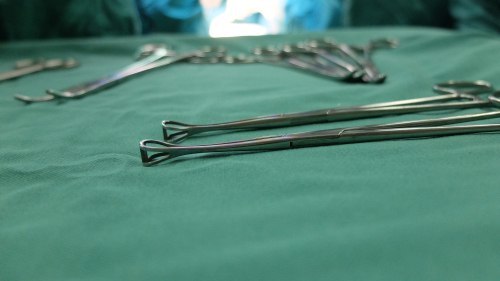Inguinal hernias can become dangerous if not surgically repaired, but repairs often require mesh implants that cause injuries. When an injury happens, the patient may be eligible to file a lawsuit for compensatory damages.
Inguinal hernia is a condition that occurs when part of the muscle lining the lower abdominal wall is weak. When this muscle is weak, tissue — like fat, part of the peritoneum, or part of the intestines — push through the muscle and into the inguinal canal in the groin region. 1 Among adults, this type of hernia is the most common associated with the abdominal wall.
Inguinal hernias are classified as either:
- An indirect inguinal hernia, which is the result of a congenital defect in the lower abdominal wall; or
- A direct inguinal hernia, which is the result of a progressive weakening of the abdominal wall muscles and usually only occurs in male adults.
If you think you have a hernia, you likely have a lot of questions. Our personal injury lawyers answer the main questions people have about inguinal hernias:
- 1. Who is most at risk?
- 2. What are the signs and symptoms?
- 3. What is the treatment?
- 4. What are the side effects of surgery?
- 5. How do you prevent an inguinal hernia?
- 6. When should you see a doctor?
- 7. When should you see a personal injury and medical malpractice lawyer?

1. Who is most at risk?
If you are a male adult and have a family history of inguinal hernia, then you are eight times more likely to develop an inguinal hernia. 2 There are few other risk factors, and they include:
- Family history, the predominant risk factor for both direct and indirect types
- Male adult, a predominant risk factor for both direct and indirect types
- High work activity (e.g., lifting heavy weights, straining)
- Chronic obstructive airway disease (e.g., chronic cough)
- Previous surgery that weakens the lower abdominal muscles
- Obesity that weakens the lower abdominal wall.
Twenty-five percent of all males will develop an inguinal hernia at some point in their life compared to about two percent of females. 3 For females, the uterus acts as a protective barrier. 4
2. What are the signs and symptoms?
There are many signs and symptoms, the first and foremost being an evident bulge in the groin area. The bulge often disappears when you lay down. Over time, it will grow. For some people, they never experience any other symptom but the bulge. Others, however, experience more symptoms.
Signs and symptoms are all felt in the groin region and include:
- Bulge in space between lower abdomen and thigh
- Pain or general discomfort, particularly when lifting, coughing, exercising, but the discomfort goes away when resting
- Feeling of heaviness or weakness
- Burning or aching sensations.
3. What is the treatment?
Not everyone who has an inguinal hernia requires surgery. Alternatively, not everyone who has an inguinal hernia requires surgery right away, but may need it eventually as the hernia grows in size. When surgery is not required — at least immediately — there’s no treatment, only keeping an eye on it.
Surgery becomes necessary when:
- the size of the hernia becomes bothersome;
- It becomes painful; or
- It is life-threatening. 5
There are two types of inguinal hernia, and one is a life-threatening emergency:
- An inguinal hernia can be “incarcerated,” meaning the tissue that passed through the muscle has become stuck and cannot move back into its proper place. In this situation, a doctor may be able to push the incarcerated tissue back into its place. Sometimes surgery is still required.
- An inguinal hernia can be “strangulated,” which means to the lower abdominal wall has trapped is squeezing the protruding tissue. When this happens, the blood flow is cut off in the intestines. This type is a life-threatening medical emergency and surgery is required.
There are three different types of surgery that can be used depending on the condition:
- Open surgery without a mesh is used when neighboring connective tissue is sown together.
- Open surgery with a mesh is used to cover the hole in the muscle and strengthen the abdominal wall.
- Laparoscopic surgery requires 3 small incisions and the abdominal wall is prepared using a small camera and synthetic mesh.
Complications are more likely to arise in laparoscopic surgery than open surgery. 6 If open surgery is performed, regional or local anesthetic is used while general anesthetic is required for laparoscopic surgery. 7
4. What are the side effects of surgery?
These types of surgeries are performed routinely by doctors, but they do come with known risks and side effects.
- Pain in the groin area is expected for a few days after surgery, but approximately 10 out of 100 persons experience permanent pain after surgery. Permanent pain is usually associated with the synthetic mesh. 8
- Some men have damage to their blood vessels, spermatic cord, or the nerves inside the inguinal canal.
- Some people experience inflammation and problems with healing.
- Some men experience poor blood circulation or pain in the testicles.
After having the hernia removed, about 1 to 5 people out of 100 will have another hernia develop. 9 Surgery may be required again, but if open surgery was employed the first time, laparoscopic will be used the second time. 10
Sometimes complications arise that can cause serious injuries due to a defective product. These injuries and complications include:
- The synthetic mesh adheres to the tissue.
- There are problems with constipation and bowel obstruction.
- Serious infections during the healing process.
- The synthetic mesh failing to support and connect the tissue.
- The mesh moves or migrates from its location.
- Organs or other tissue are perforated.
- Seromas or pockets of fluid develop.
When these more serious and sometimes life-threatening conditions occur, you may have to have surgery to have the mesh removed. Other times, symptoms may not develop until well after the surgery or you may experience long-term complications like chronic pain.
5. How do you prevent an inguinal hernia?
For congenital hernias, there is no prevention. For many adult males, there may also be no means to prevent muscle weakness that leads to a hernia. But for some of you, you can prevent it. Some ways to prevent an inguinal hernia include:
- Do not smoke.
- Take care of a cough quickly by seeing a doctor and following a treatment plan.
- Stay in shape.
- Avoid straining while urinating or during bowel movements.
- Use your knees to lift, not your back.
- Do not lift weights too heavy for you. 11
6. When should you see a doctor?
Generally, if you suspect you have an inguinal hernia, you should see a doctor. Otherwise, seek immediate medical attention if you have an inguinal hernia or have had inguinal hernia repair surgery and you experience:
- Severe pain
- Fever
- Nausea
- Constipation.
7. When should you see a personal injury and medical malpractice lawyer about an inguinal hernia?
Generally, you will never have to contact a medical malpractice lawyer. The only time this would occur is if the medical device (e.g., synthetic mesh) is defective or if your physician or other medical professional breached his or her duty to you and you were harmed because of that breach.

Injured by medical malpractice or a defective medical device? Contact us to learn about your options.
If you or someone you know has been harmed by a doctor, nurse, or other healthcare provider’s negligence or by a defective medical product, you may be eligible to pursue a hernia mesh lawsuit. Call us or fill out our online contact form on this page for a free case evaluation.
References
- National Institute of Diabetes and Digestive and Kidney Diseases (NIDDK). Inguinal Hernia.
- Ibid.
- Ibid.
- Lau, H. et. al. Risk factors for inguinal hernia in adult males: a case-control study. Surgery. 2007 Feb;141(2):262-6. Epub 2006 Jul 31.
- National Institute for Health (NIH). Hernias: Inguinal hernia repair. September 21, 2016.
- Chowbey, Pradeep K. and et. al. Complications in groin hernia surgery and the way out. J Minim Access Surg. 2006 Sep; 2(3): 174–177.
- Supra note 5.
- Ibid.
- Ibid.
- Ibid.
- Healthline. Hernia.
